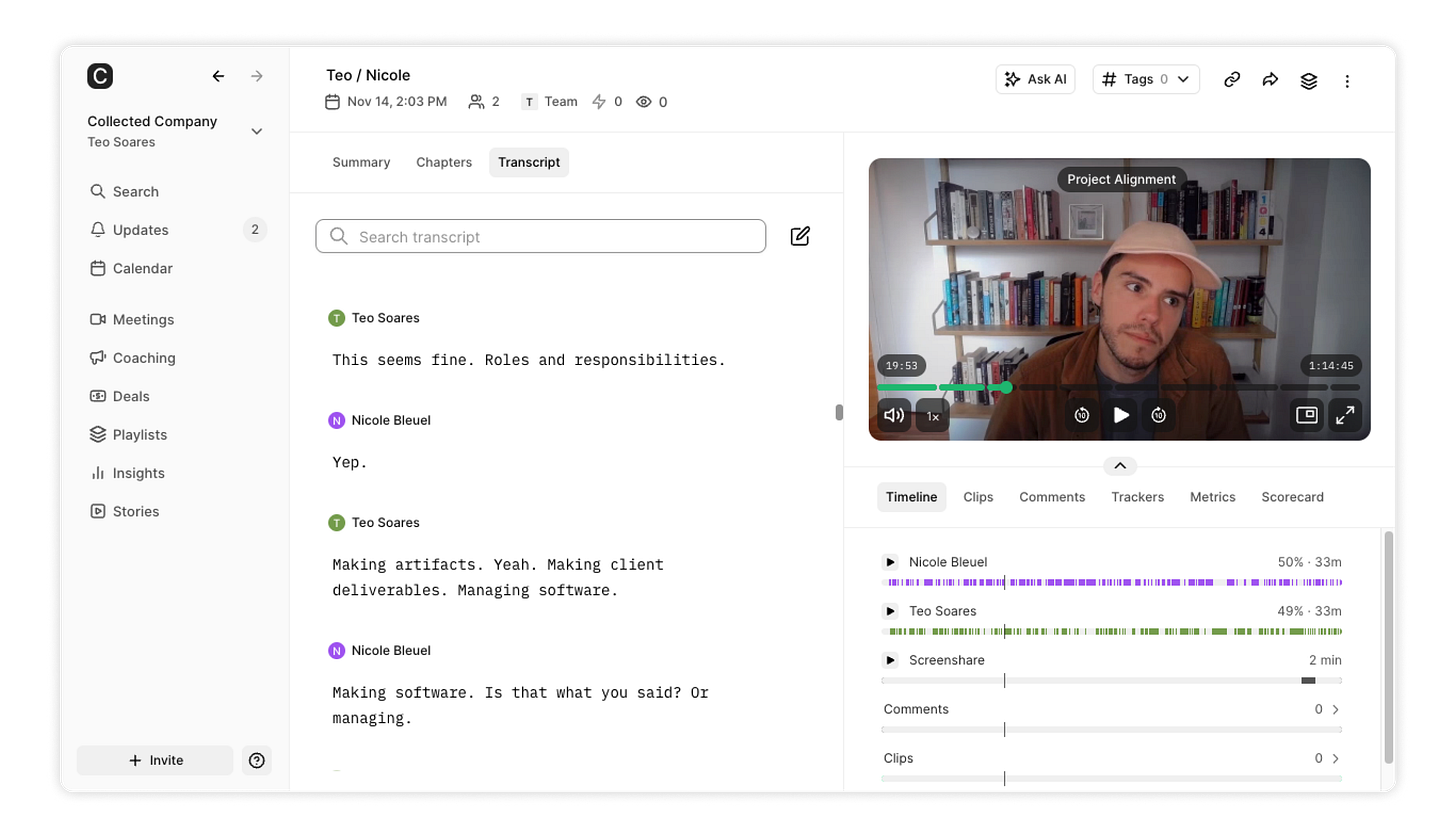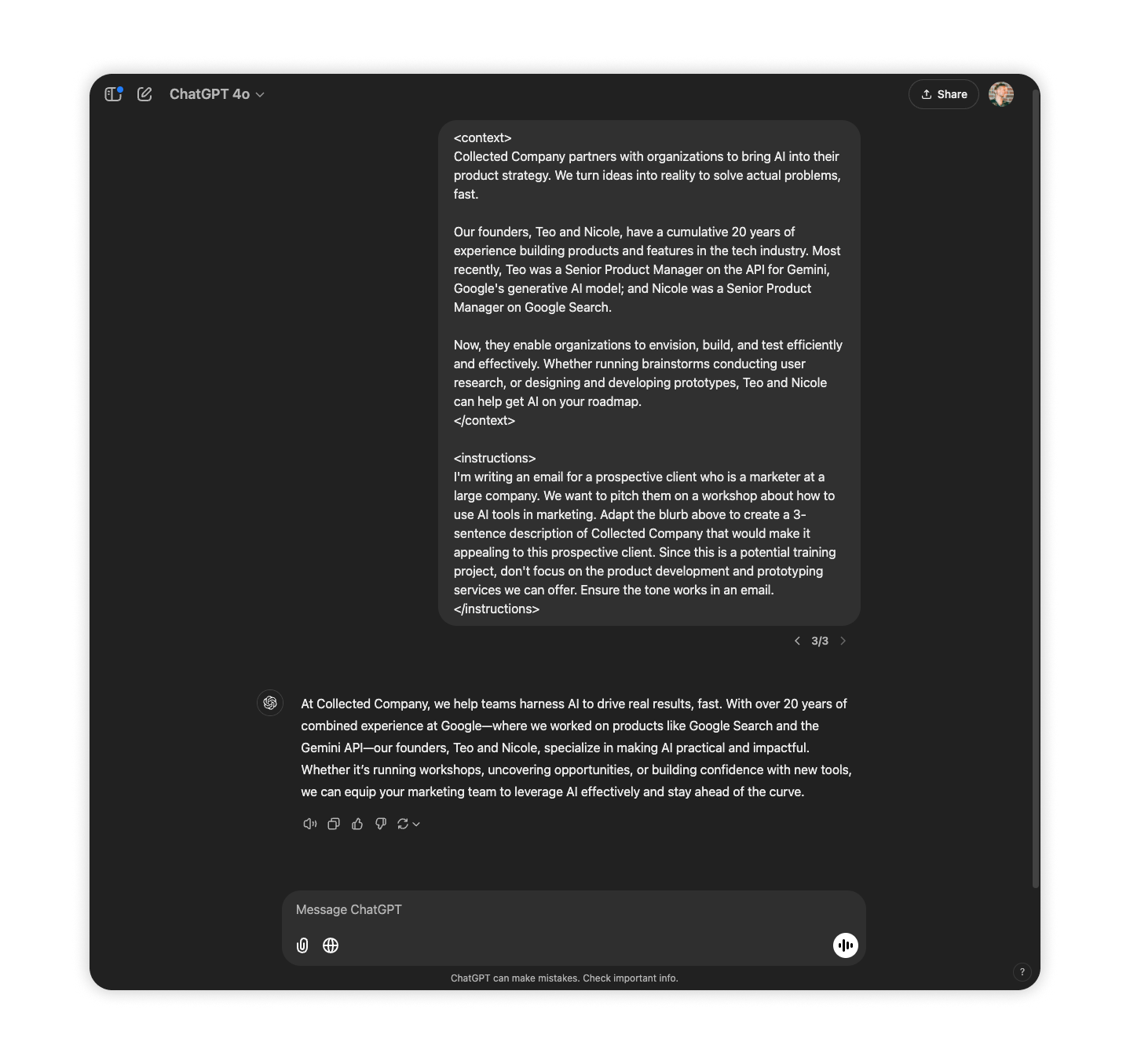Practical (AI) Magic
How We Use AI at Collected Company
Scroll through LinkedIn for five minutes and you'll inevitably see some version of a post like, "If You're Not Using These 7 AI Tools, You're Already Irrelevant."
Take it from someone who makes a living with AI tools: That’s snake oil.
Useful technology is not about the tool. It's about the problem you're solving.
At our firm, Collected Company, we’ve been integrating AI tools by first looking at our actual work—where we’re losing time, where processes feel clunky, where human energy is being wasted on repetitive tasks—and only then thinking up ways AI can help.
Here are three examples.
Proposal Generation: Turning Conversation into Content
To write a proposal, Nicole and I would spend an hour on a video call discussing the project. Then, one of us would spend at least another hour capturing all of those points in a document. Essentially, we were drafting the proposal twice—first verbally, then in written form.
We figured we could use AI to jumpstart the document-writing, allowing us to keep our energy and creativity for the live conversations and ideation. Now, our process involves recording and auto-transcribing our conversation, and then using language models to generate a first draft.
We happen to use Grain.co for recording and transcribing our calls and ChatGPT or Gemini to generate the first draft, but the magic isn't in those specific tools—it's in recognizing the redundancy and finding a smarter path.
Interview Insights: From Raw Conversation to Actionable Intelligence
Stakeholder interviews are often a key part of our projects. Whether it’s talking to client teams to understand their processes or diving deep into customers’ experiences, there’s no substitute for hearing from people fist-hand.
AI can never replace the role of a human interviewer, and it cannot generate the level of analysis and insight we want to deliver. But it can dramatically streamline the insight validation process—something that used to require hours of digging through interview transcripts in search of quotes.
Now, we can quickly cross-reference and validate our hypotheses with tools like Google's NotebookLM, which allows us to query up to 50 sources simultaneously. This means we can identify corroborating evidence or contradictions across multiple sources, transforming raw interview data into more robust, well-substantiated findings.
Adaptive Messaging: Making AI Actually Useful in Marketing
Most of the time, creating marketing content with AI doesn't reduce inefficiency; it multiplies it. Wrestling a language model into producing exactly what you want is time-consuming and bypasses the crucial strategic exercise of understanding your offering and positioning.
The real opportunity with language models isn't wholesale content generation, but adaptation. Marketing requires nuanced messaging: a pitch to an investor shouldn't sound like a pitch to a potential client. This is where AI truly shines.
At Collected Company, we use AI as a translation tool, not a content creator. We start with a carefully crafted, human-written narrative and use AI to subtly adjust tone, emphasis, and language for specific contexts. By harnessing AI's ability to refine and adapt, we communicate more precisely and efficiently.
The Real AI Revolution: Problem-Solving, Not Tool-Collecting
AI, at its best, is an extension of human creativity and problem-solving. We shouldn’t start by asking, "What can this tool do?" We should start by asking, "What can we do better?"
Each AI integration is a custom solution, tailored to our specific challenges. It's less about adopting the latest shiny object and more about understanding the unique ecosystem of our work.
Your Turn: A Challenge
Map out your workflows. Where do things get stuck? Where are humans doing work that feels mechanical? Where is time mysteriously disappearing?
Those are your AI integration opportunities.
The future of work isn't about having the shiniest tools. It's about solving real problems with thoughtful, purposeful technology.




